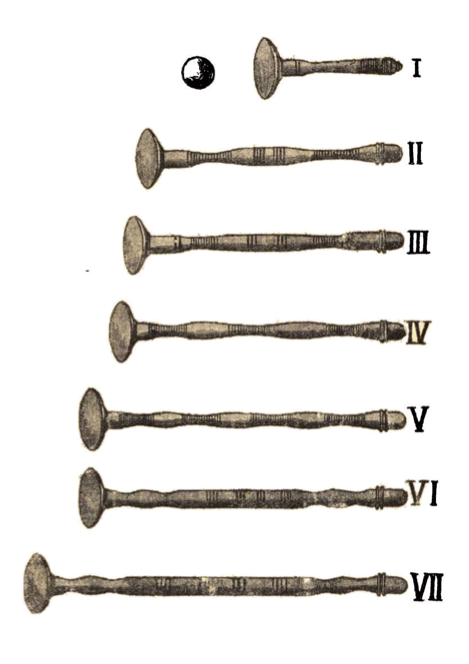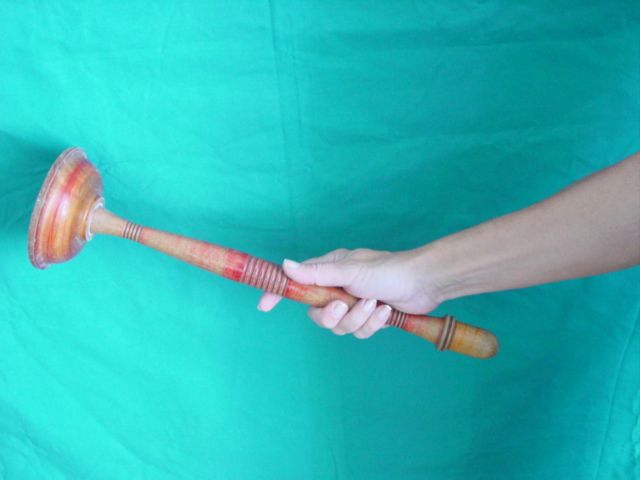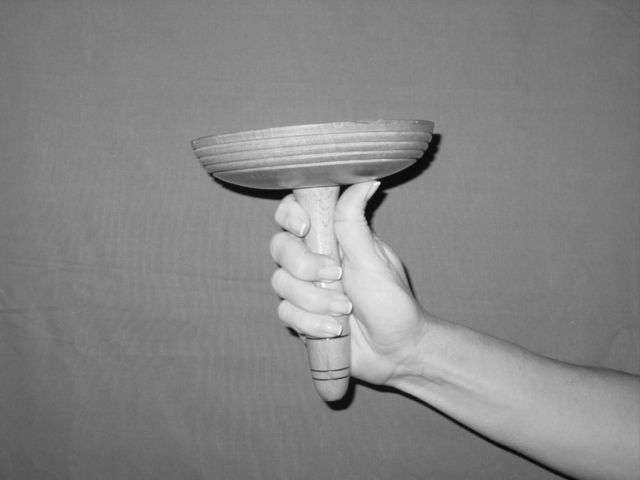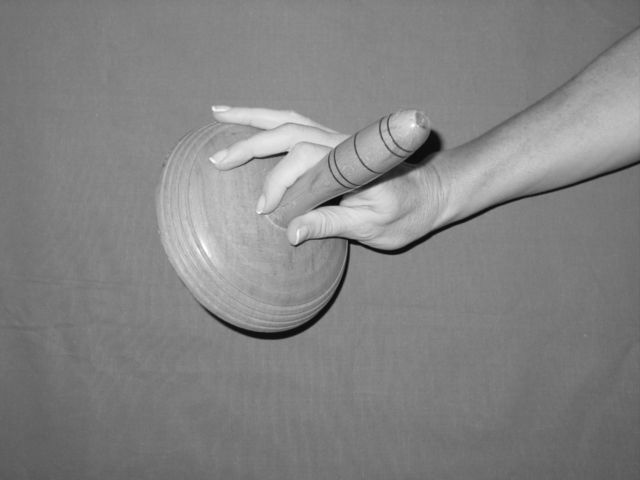I.7.2. The history of the turul racket
The development of the turul racket
The Antal Halácsi-style rackets had handles with different lengths (30-90 cm), but with the same surface for hitting: a plate with a diameter of 13 cm. The plate weighed 200-250 g, and the handle was even heavier (400-500 g). The players made rapid pushes from power lunge, a movement very similar to fencing, and hit the ball up to 20-30 cm. The handle was called stick and the hitting surface was referred to as plate.

From the 1950s, the handle became shorter, and the smooth hitting surface had deeper and deeper circular grooves and got bigger. The popular rackets of the 1960s were also made of hard wood, and the plate had only slight grooves. From then on, the weight of the racket was fixed at 300 g with a handle of 18 cm in length. The specific weight of the wood gave the racket its “pull”, which was very important for the players. In the 1990s, teacher Gyula Kozma produced professional rackets made of steamed beech, which permitted more twists and slices together with more unexpected and surprising hits.

Description of grips
Original fencing grip or grip with the palm
At the beginning of the century, in the case of rackets with long handles, players held them in their palms in the middle of the handle. In the case of long handles, this required significant dexterity from the players. At that time, fencing served a basic training for this sport, which is why they used long handles. They only made low pushes as hits, and this is how this strange grip could develop together with the use of the long handle.

Sports grip or palm grip
A sports grip means that the handle of the racket is at the base of the thumb and the other four fingers wrap the handle on the surface of the racket. As the handle shortened with time, both the grip and the use of the racket changed. The sports grip or palm grip brought new hit types, and high strokes also appeared beside low hits. This resulted in the acceleration of the game. Hits above the head and the need to adapt to high hits made the game even more amusing. There were spectacular rallies, by which the game became more entertaining for the audience, as well.

Individual grip
It is also possible to adjust the racket to our individual grip style. One such grip is when the player puts the racket between the index and middle fingers to give it more stability. This grip might be favoured by children and women, but its disadvantage is that the backhand side becomes insecure and easy to attack. This grip is recommended to beginners and players with small hands.
 |
 |
Penhold Grip
The quicker, trickier versions of the game brought it with themselves from table tennis by the 1990s. The racket is handled with the thumb and the index finger, while the other fingers are spread on the other side. This grip can successfully be applied at modern rackets with straight handles regardless of their shape.

Benefits of the penhold grip:
- it is easy for children to learn;
- it is easy to manoeuvre the ball;
- the mobility of the wrist is ensured;
- for backhand strokes you do not need to change the grip.
Disadvantages of the penhold grip:
- beginners can easily drop the racket;
- backhand strokes are more difficult;
- can only be used on smooth handles;
- its use requires more experience.
The rules of the Turul Game are available at this link: